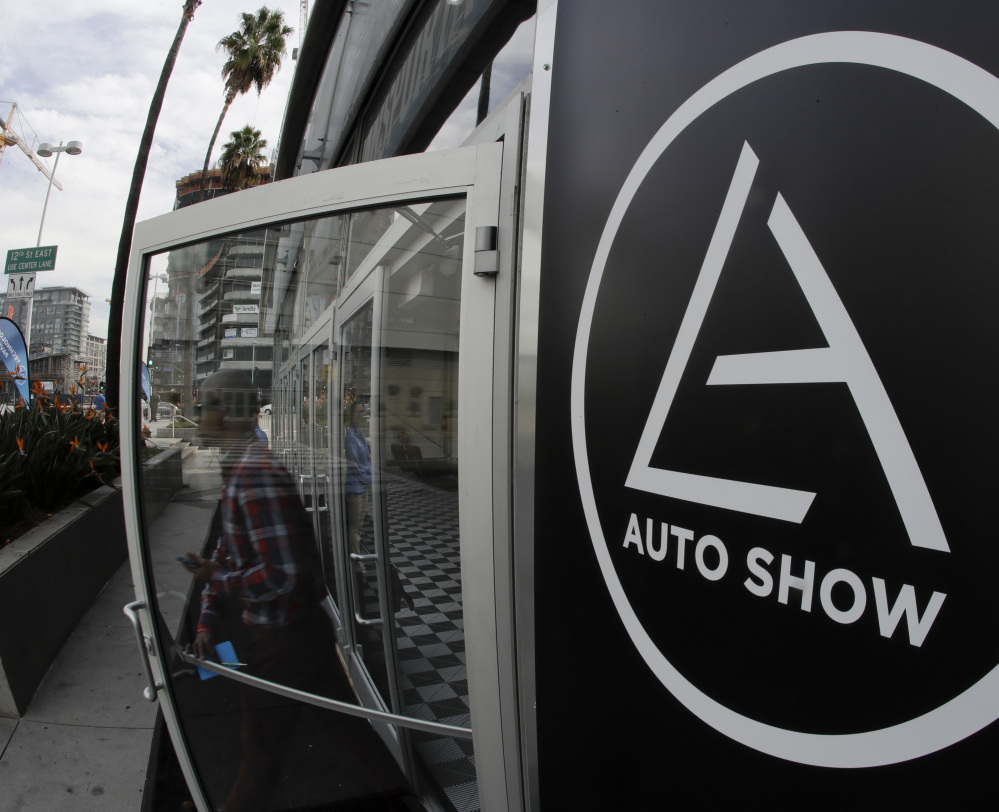LOS ANGELES — Visitors to the upcoming Los Angeles Auto Show will see supercars, hoverboards, self-propelling luggage and all manner of new transportation options.
But they’ll be hard-pressed to find a clutch pedal or a stick shift. Available in nearly half of new models in the U.S. a decade ago, the manual transmission is going the way of the rumble seat, with stick availability falling to about a quarter of vehicles this year.
Once standard equipment on all motor vehicles, preferred for its dependability, fuel efficiency and sporty characteristics, the four-on-the-floor and the three-on-the-tree are disappearing from major car manufacturers’ lineups – and subsequently from the sprawling auto show’s floors.
This is as true of everyday sedans as it is of souped-up sports cars. Mercedes-Benz, Ferrari, Lamborghini, Alfa Romeo, Volvo, Lexus, Chrysler and Buick no longer offer a single model with manual transmission. Audi, Jaguar, Cadillac and GMC offer only one.
“It’s a disgrace,” said driving enthusiast and Kelley Blue Book senior analyst Karl Brauer. “Yes, it’s more troublesome and expensive for the automakers. But it’s completely inexcusable that Ferrari doesn’t even offer a manual.”
In 2006, 47 percent of new models offered in the U.S. were available with both automatic and manual transmissions, according to a study by Edmunds.com. By 2011, that number had dropped to 37 percent. This year, the number has fallen to 27 percent.
The actual sales figures are even lower. Edmunds senior analyst Ivan Drury said fewer than 3 percent of current U.S. car sales are manual vehicles – compared with 80 percent in some European and Asian countries, and down in the U.S. from 7 percent in 2012 and 25 percent in 1992.
“That number is never going to go back up,” Drury said. “The trajectory is down, headed for zero.”
For decades, almost all automakers offered almost all their vehicles with a choice of automatic or manual drive trains. The stick shift had so long been the standard that a manual transmission was actually known in the industry as a “standard” transmission.
But as automakers perfected the automatic transmission, and learned to make it less expensive and more dependable, drivers became accustomed to the relative ease of leaving the shifting to the car. Automatics gradually became the preferred option, and automakers began offering them in fewer vehicles, saving them money because they no longer had to manufacture two drive trains.
Stick availability is more widespread among European carmakers such as BMW and Porsche, a reflection of the transmission’s popularity there. But other companies – Ford, Honda, Toyota, Nissan, Kia, Subaru, Volkswagen and Hyundai – only offer sticks in selected models.
“We recognize there are still consumers that appreciate the manual control of the power train,” said Derek Joyce, an executive with Hyundai.
Copy the Story LinkSend questions/comments to the editors.



Success. Please wait for the page to reload. If the page does not reload within 5 seconds, please refresh the page.
Enter your email and password to access comments.
Hi, to comment on stories you must . This profile is in addition to your subscription and website login.
Already have a commenting profile? .
Invalid username/password.
Please check your email to confirm and complete your registration.
Only subscribers are eligible to post comments. Please subscribe or login first for digital access. Here’s why.
Use the form below to reset your password. When you've submitted your account email, we will send an email with a reset code.